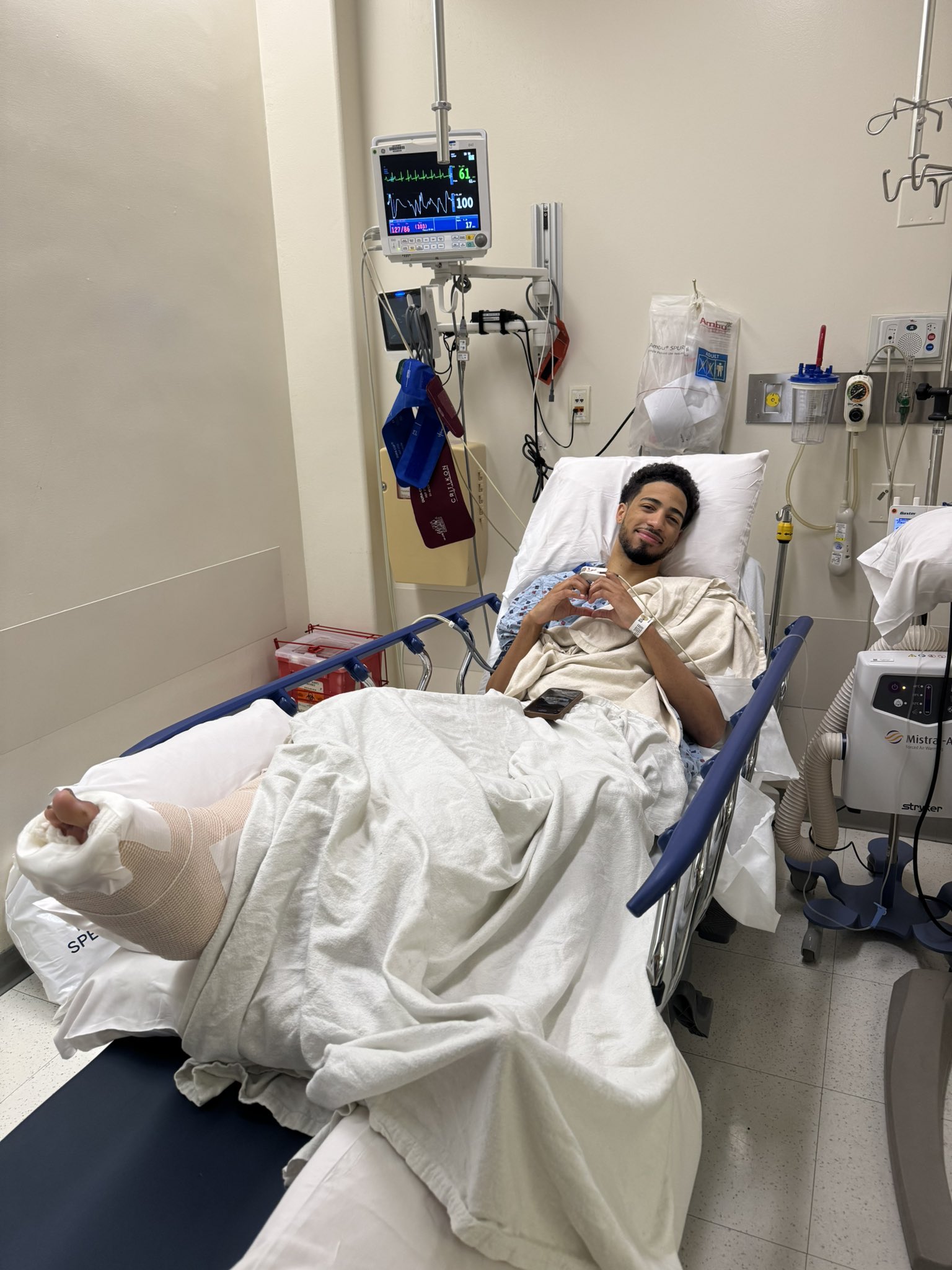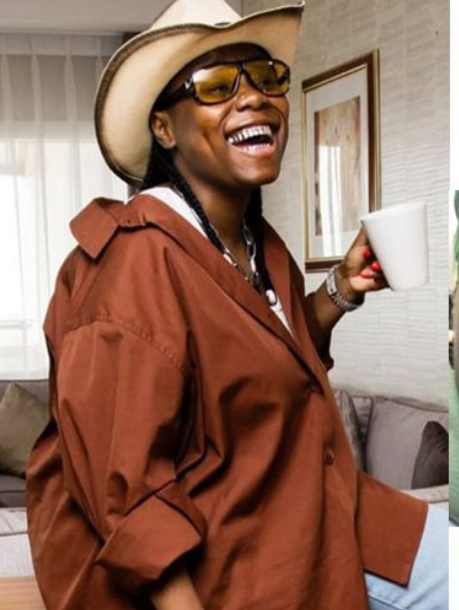

The electric atmosphere in Oklahoma City for Game 7 of the Western Conference Finals turned silent in a matter of seconds. Tyrese Haliburton, the heart and soul of the Indiana Pacers, crumpled to the hardwood in the first quarter, clutching his right leg. No contact. No collision. Just an eerie, solitary collapse. The replay left no ambiguity—it was the kind of movement every athlete dreads, and every fan fears. Moments later, the diagnosis came through like a thunderclap: a torn right Achilles tendon. Just like that, Haliburton’s heroic playoff run ended, and with it, the Pacers’ hopes dimmed under the harsh light of a cruel twist of fate.
The game continued, but it no longer felt like basketball. For Indiana fans, the scoreboard faded into the background. It was no longer about advancing; it was about heartbreak. It was about watching a young star’s promising journey come to a sudden, agonizing halt. Haliburton had been more than just the Pacers' point guard. He was their identity, their leader, their spark plug. And now he was being wheeled off the court with his face buried in a towel, trying to hide the pain—physical, emotional, and everything in between.
By the end of the night, Indiana fell to Oklahoma City, sealing their fate and sending the Thunder to the NBA Finals. But even for the victors, there was no celebration without a shadow. “You hate to see it, man,” said OKC’s Shai Gilgeous-Alexander post-game, his voice heavy. “He’s a warrior. The whole league respects Tyrese.”
Haliburton underwent surgery the following morning in New York City. The procedure was successful, but the real battle now begins. Recovery from an Achilles tear is one of the most grueling in all of sports. It demands time, patience, and resilience—the very qualities Haliburton has shown in spades since his rookie season. In his first statement after the surgery, Haliburton posted on social media: “Toughest day of my life. This isn’t how the story ends. I’ll be back, stronger than ever. Count on it.”
Within minutes, the post was flooded with support. Teammates, rivals, legends, and fans from around the world poured in with well wishes. NBA Commissioner Adam Silver issued a public statement praising Haliburton’s impact on the game and wishing him a full recovery. Indiana head coach Rick Carlisle, fighting back tears in a press conference, called Haliburton “the engine of our team and the heartbeat of our locker room.” He added, “We’re devastated, but knowing Tyrese, I have no doubt he’ll come back stronger.”
The injury has sparked fresh debate across the league about the demands placed on players, especially in the grueling stretch of the playoffs. This postseason saw Haliburton averaging a career-high in minutes and intensity, dragging Indiana past title contenders and into one of the most improbable Game 7s in recent history. His leadership on and off the court became the stuff of legend—vocal in the huddle, unselfish with the ball, relentless on both ends of the floor.
Now, the Pacers face a brutal reality: their franchise player will likely miss a significant portion of the 2025–26 season. Without him, the structure collapses, at least temporarily. It’s not just about the points or assists. It’s the way he orchestrates the game, the way he inspires belief in a young squad that had been written off time and again.
Injuries of this magnitude are career-defining. For some, it’s the beginning of the end. But for others—those with a special kind of fire—it’s just the beginning of a new chapter. Kevin Durant, who famously battled back from an Achilles tear, reached out to Haliburton privately and later told reporters, “He’s built for this. I’ve seen what kind of guy he is. He’ll overcome this, and he’ll be even better.”
The road ahead is long. Physical therapy. Reconditioning. Endless hours in the gym, away from the spotlight. For a player like Haliburton, who thrives on the rhythm of the game and the energy of the crowd, it will be an especially cruel silence. But those close to him say he's already focused on the challenge. “He’s not sulking,” said a Pacers trainer who requested anonymity. “He’s studying tape. He’s texting the guys. He’s staying mentally sharp. That’s just who he is.”
The Pacers front office now faces an offseason filled with difficult decisions. Do they build a team to survive without Haliburton, or do they punt on the season, waiting for their leader to return at full strength? Either way, the emotional weight of his absence will linger.
Haliburton’s injury has also rippled beyond Indiana. Around the league, it serves as a reminder of how fleeting greatness can be. One step. One movement. One moment. And everything changes. The image of him falling—alone, stunned, betrayed by his own body—will be seared into the minds of fans and players alike.
But so too will be his response.
Not with self-pity. Not with excuses. But with resolve.
“This is a setback,” he wrote in a second update on Instagram, a photo of his leg in a cast and a Pacers towel draped over his lap. “But it’s not the end. I’ve been doubted before. I’ve been overlooked. I know how to fight. I know how to win. And I’ll do it again.”
For now, the cheers in Indiana have quieted. The jerseys remain in closets. The dreams of a championship will have to wait. But make no mistake—when Tyrese Haliburton returns, the game will feel whole again. And if his journey so far is any indication, the comeback might be even greater than the rise.
Because some players are built for the spotlight. Tyrese Haliburton is built for the storm.


